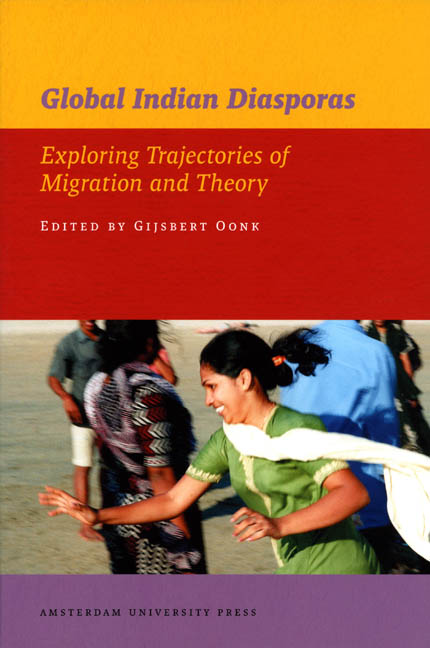7 - Contested Family Relations and Government Policy: Linkages between Patel Migrants in Britain and India
Published online by Cambridge University Press: 23 January 2021
Summary
This paper discusses the social links between Indian migrants in Britain and their family members in India. It is based on fieldwork among members of the Patidar community in rural central Gujarat and among their relatives in London. Members of this community have a long history of national and international migration. Many of them migrated to East Africa in the early part of the 20th century and from there to Britain (and the US) in the 1960s and 1970s.
The aim of this paper is to show the differences in perspective on the social links ‘from below’ between the Patidar migrants in London and their relatives in Gujarat. Both the migrants in London and their relatives in Gujarat acknowledge the notion of an Indian diaspora as a significant category, but they frame and discuss this notion in very different and contradictory ways. The Patidar community in London is a transnational community that maintains frequent long-distance family links with their home region in India. There are, however, differences within the community that are related to their patterns of migration. The links between family members India and Britain are neither static nor without problems. Over time, the orientation towards India has become more ambivalent. Moreover, there are differences of opinion between the Indian migrants in London and their relatives in Gujarat on the nature of their relationship and on the type of help rendered. Furthermore, the migrants in London challenge the government perspective on the diaspora concept. This paper thus shows the complex process of appropriation of notions of ‘the Indian diaspora’ among those who describe themselves as members of that diaspora, and among their relatives at home.
Introduction
By the end of the twentieth century, about 2 million people of South Asian origin were residing in Europe, the US and Canada. The majority of them, about 1.26 million, live in Britain (Jain 1993: 34-35). Geographically, the Indian migrants in Britain are concentrated in the urban counties of England, from Kent in the south east to Lancashire in the north west. The largest number, about 36 per cent of the total Indian population, live in Greater London, while 22 per cent have settled in the Midlands area (Ram 1989: 101-02). With regard to their region of origin in India, the Gujarati and Punjabi communities are by far the largest Indian communities in Britain (Jain 1993: 36).
- Type
- Chapter
- Information
- Global Indian DiasporasExploring Trajectories of Migration and Theory, pp. 167 - 194Publisher: Amsterdam University PressPrint publication year: 2007
- 14
- Cited by



